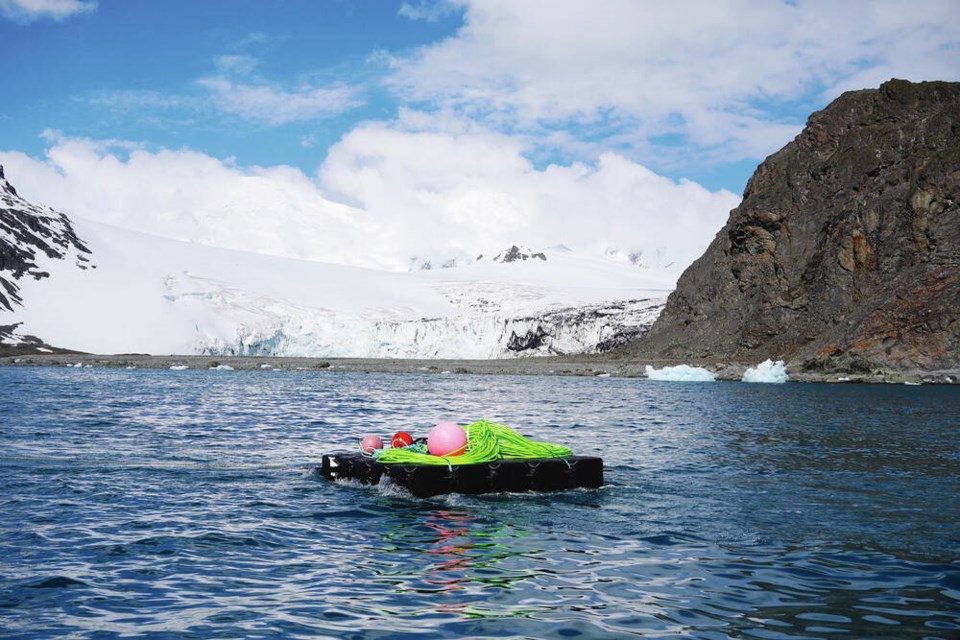University of Victoria-based scientists are teaming up with their Spanish peers to study the Antarctic Ocean, following an international plea for more work to be done there.
UVic’s Ocean Networks Canada, which operates underwater observatories off the country’s Pacific, Atlantic and Arctic coasts, will be working with the Spanish National Research Council at its Antarctic station.
As with its existing observatories, ONC’s Antarctic version will include sensors connected to cables on the ocean floor.
It will be the first time ONC has done subsea research beyond Canadian waters.
ONC and its Spanish counterparts announced their partnership this week, and cited a recent call from 300 scientists in 25 countries for an “urgent expansion” of observation in the Antarctic Ocean, also known as the Southern Ocean.
A joint statement from the scientists in December said there is a “chronic lack” of work being done in the area.
David Hik, chief scientist for Polar Knowledge Canada — which manages Canada’s scientific contributions and commitments to the Antarctic Treaty — said the partnership between Canada and Spain is an important milestone in ocean monitoring.
Chief executive Kate Moran said ONC has operated in the harsh polar conditions in the Arctic since 2012, so it has the expertise to contribute to Spain’s ongoing work around Antarctica and the Antarctic Ocean.
She called Antarctica “a continent that is critical to this planet’s climate system” and said it is undergoing “rapid, consequential changes” that must be understood.
The ONC’s new observatory there will produce data on a range of ocean conditions, and monitor seawater quality where the ocean and glacier melt come together.
Sensors include equipment to measure temperature, oxygen concentration and chlorophyll levels on the water.
The Spanish polar-research vessel Hespérides is en route to the Antarctic station with the material to build the observatory, and is scheduled to arrive there this month.
“This partnership with Ocean Networks Canada will provide vital ocean science data in the Southern Ocean, not least because the new observatory will operate year-round outside of the station’s staffed summer months,” said Jordi Sorribas Cervantes, director of the Unit of Marine Technology for the Spanish research group.
“Having access to this near-continuous data, from anywhere in the world, will help meet the current data gap challenge in the Southern Ocean.”
The proposed location for the observatory, modelled after one of the ONC observatories in the Arctic, is in a small bay at a depth of 23 metres in the South Shetlands Archipelago — north of the Antarctic Peninsula.
The ONC said its research partnership fits with UVic’s commitment to the United Nations’ sustainable-development goals and to the university’s focus on climate action.
“It’s exciting to see ONC’s transformative leadership in ocean science expand internationally to inform climate solutions beyond Canada’s three coasts,” said Lisa Kalynchuk, UVic’s vice-president of research and innovation and a member of the ONC board. “This partnership demonstrates how coastal communities and scientists from around the world can drive technological innovation and scientific discovery.”
ONC observatories function in both the deep ocean and coastal waters with Internet connection to scientific instruments, cameras and 12,000-plus ocean sensors.
That includes the NEPTUNE observatory off the B.C. coast, made of up over 800 kilometres of cable at depths up to four kilometres.
ONC made its first foray into subsea research in 2006 when a telecommunications device was lowered to the bottom of Saanich Inlet, and the world’s first fibre-optic cabled ocean observatory soon followed.
Data collected includes information on the chemical, biological and geological aspects of the ocean. ONC offers programs for students from kindergarten to Grade 12 and those in graduate school, and for groups in the community.
Underwater cameras were added to the system in 2013 and eight deep-sea seismometers were installed in 2018 as part of B.C.’s earthquake early-warning system.
In 2022, ONC was awarded $114.8 million over six years through the Canada Foundation for Innovation’s 2023 Major Science Initiatives Fund to support operating and maintenance costs.
>>> To comment on this article, write a letter to the editor: [email protected]



